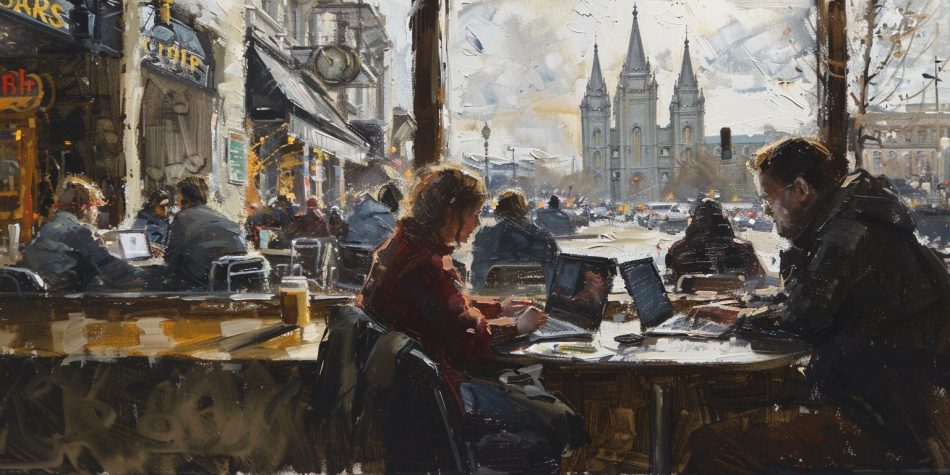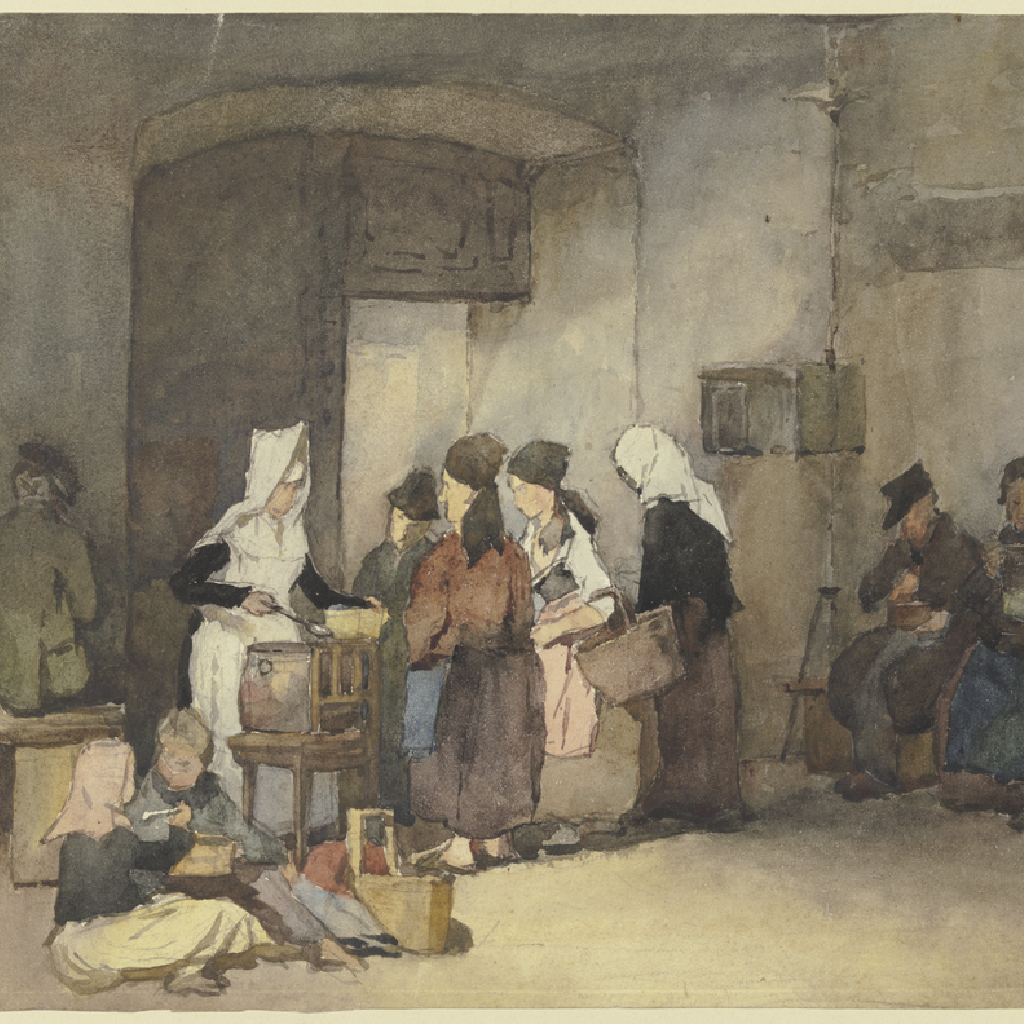The worldview of the average US-based journalist and the worldview of the average member of The Church of Jesus Christ of Latter-day Saints diverge in many significant ways. This is hardly notable and would entice an argument from very few.
The reason for this divergence comes in part from systemic pressures. For example, Latter-day Saints value confidentiality and revealing information as appropriate, as modeled by Jesus Christ, whereas journalists value the transparency which feeds their news churn. Latter-day Saints are far from monolithic.
Like within any religious body, Latter-day Saints are far from monolithic. So, while some are entirely aligned with the beliefs and practices that define the faith, naturally, others are less so.
Who are Online Latter-day Saints
Recent research by the BH Roberts Foundation asked a variety of questions about belief and practice to a representative sample of Latter-day Saints. They found two “clusters” of respondents to these questions. The first cluster represented 80% of Latter-day Saints. This group was tightly aligned on questions of belief and practice. The second cluster represented 20% of Latter-day Saints—this group (“second cluster”) was outside of the first group and also much less similar to one another than the first group.
While BH Roberts’ survey is recent, the underlying breakdown is far from new. Naturally those in the second cluster feel much less unity with their faith. Beginning in the mid-nineties, these Latter-day Saints who felt tension with their faith began to gather online to find religious validation and community.
In a 2019 essay, I analyzed the role of technology on faith in the previous decade. I wrote, “Social media has provided a venue to channel religious fervor without institutional oversight. The effect has been a kind of democratization of religion. This approach takes the church out of religion, undercutting churches’ authority (and ability) to control a narrative or maintain doctrinal boundaries.” While in that article, I didn’t spend much time examining trends within the Church of Jesus Christ, the reality is that second-cluster Latter-day Saints would have been those naturally attracted to that space.
Three years later, in a further examination, I explained, “The Church of Jesus Christ is hierarchical, and so the draw to a space with less institutional oversight was strong for those whose beliefs and behaviors put them on the fringes or outside of Latter-day Saint life, while those who felt well integrated felt no similar push to find emotional and religious validation in online communities.” Journalists are under informed about religion.
This was not a controversial realization, and by at least the mid-aughts, this reality was understood by Latter-day Saints who were interested in the space. The More Good Foundation, which I worked for when I first graduated school, was founded in 2005 to counteract this trend. I received permission to share one internal data point that illustrated this trend. In January 2008, as an example of this trend, 85% of YouTube videos about the Church were in tension with church teachings. Other internal data from the group had similar findings.
The second cluster which gathered online went in many directions. Both those who were distinct from the main body of the church in a more fundamentalist direction and those who were distinct from the church in the direction of the broader US culture gathered in these online spaces. However, the group closer aligned to the broader culture tended to be larger.
In other words, because the online space provided a place for them to gather, these “second-cluster” Latter-day Saints adopted online communities earlier and came to dominate the online religious spaces. This effect was well-known early on, and it remains in effect today.

Journalistic Pressures
As a rule, journalists are underinformed about religion. Each religion includes a massive amount of history and context. Thus, it would be nearly impossible for a journalist to be well-attuned to all the faiths of a pluralistic society. Often, however, they don’t do the work to make up for those gaps. Claims tend to underrepresent the large majority.
Journalists have also been in a long trend away from objective reporting and more toward transparent reporting. Many feel their role as journalists is to work toward what they believe are moral ends. This trend was significantly accelerated in the wake of George Floyd’s murder.
One other change in the work of journalists has been the advent of social media which has been a gold mine for journalists who are often facing financial pressures that make time-consuming on-the-ground reporting increasingly difficult. Social media allows them to gather quotes without needing to make contacts or gain permission as they would have had to do otherwise. While many have criticized how much journalists have come to rely on social media to report on stories, the financial realities are simply more powerful. And even when news stories don’t cite social media directly, their sources are often found using social media.
For journalists reporting on The Church of Jesus Christ, the Latter-day Saints most accessible to them online are the “second-cluster” Latter-day Saints, most of whom diverge from their faith in the direction of the average journalist—including those advocating for the causes that the journalists feel warrant the suspension of their neutrality.
Trends Collide to Create a Genre
The trend in online-Latter-day Saints and the multiple pressures affecting journalists intersect to create a particular vulnerability in reporting about the Church of Jesus Christ.
Online Latter-day Saints tend to be less aligned with their faith. Journalists who aren’t religiously in tune don’t understand this trend. Then, they use the words of these online Latter-day Saints to create a narrative of internal dissent and advocacy against the Church for change in order to increase the pressure on the Church to become more in line with the worldview of the journalists.
These claims, founded in the small second cluster of Latter-day Saints who are much more online, tend to underrepresent the large majority of first-cluster Latter-day Saints who support their faith and who aren’t terminally online at the same rates. Simply put, the most dissatisfied with their experience tend to be the most visible online rather than the most accurate general representation.
These trends have created a genre of articles that present Latter-day Saints generally as experiencing tension with the Church, when only a small minority of Latter-day Saints share those feelings.
A notable example of this genre was written by Michelle Boorstein of the Washington Post. She wrote that calls for reform in the Church’s financial reporting were increasing. But she based this on what she saw in blogs and podcasts. Whoops.
The Salt Lake Tribune is perhaps the most notorious purveyor of this genre because of how frequently they report about the Church of Jesus Christ and the degree of financial pressure they are under. Recently for example, they ran a story that promised in its headline to explain “what LDS women want,” but their interviewees were two Instagram influencers. Yikes.
The New York Times recently added to the genre reporting on, of all things, an Instagram post. They began with the typical religious illiteracy, such as inaccurately stating that within our faith, “The stand is a place of status” to create a narrative of oppression and resistance that is foreign to most Latter-day Saint women. To expand their reporting beyond the Instagram comments, they relied on similarly terminally online Latter-day Saints such as podcasters.
They limited Latter-day Saint women who disagreed to a single example in a single paragraph, despite the fact that the most recent Pew survey shows 90% of Latter-day Saint women oppose ordination. Because Ruth Graham, who wrote the piece, doesn’t understand the underlying dynamics of online Latter-day Saints, her readers leave her article misinformed about how women in The Church of Jesus Christ feel.
A Better Approach for Journalists
Obviously, Latter-day Saints who don’t align with their church are no more or less worthy of coverage by prominent newsrooms. Their perspectives are just as legitimate as anyone else’s. But when their voices are continually overrepresented while Latter-day Saints in the vast majority are ignored or sidelined, it creates a narrative that further marginalizes those seeking to live a minority faith and misrepresents trends within the Church to outsiders, as Boorstein, Graham, and the Tribune did in these examples.
“Online Latter-day Saints agree with journalists more than church leaders” is not news, or at least it hasn’t been for twenty years, yet it manages to make news time and time again. Journalists who do not wish to mislead their readers would do well to increase their religious literacy so as to avoid continuing to over-represent a small group. While “second cluster” Latter-day Saints are overrepresented online, they are far from the only Latter-day Saints online. Making efforts to connect with more representative members to cite and source, particularly those “first cluster” Latter-day Saints, would go a long way to helping address this problem.

















